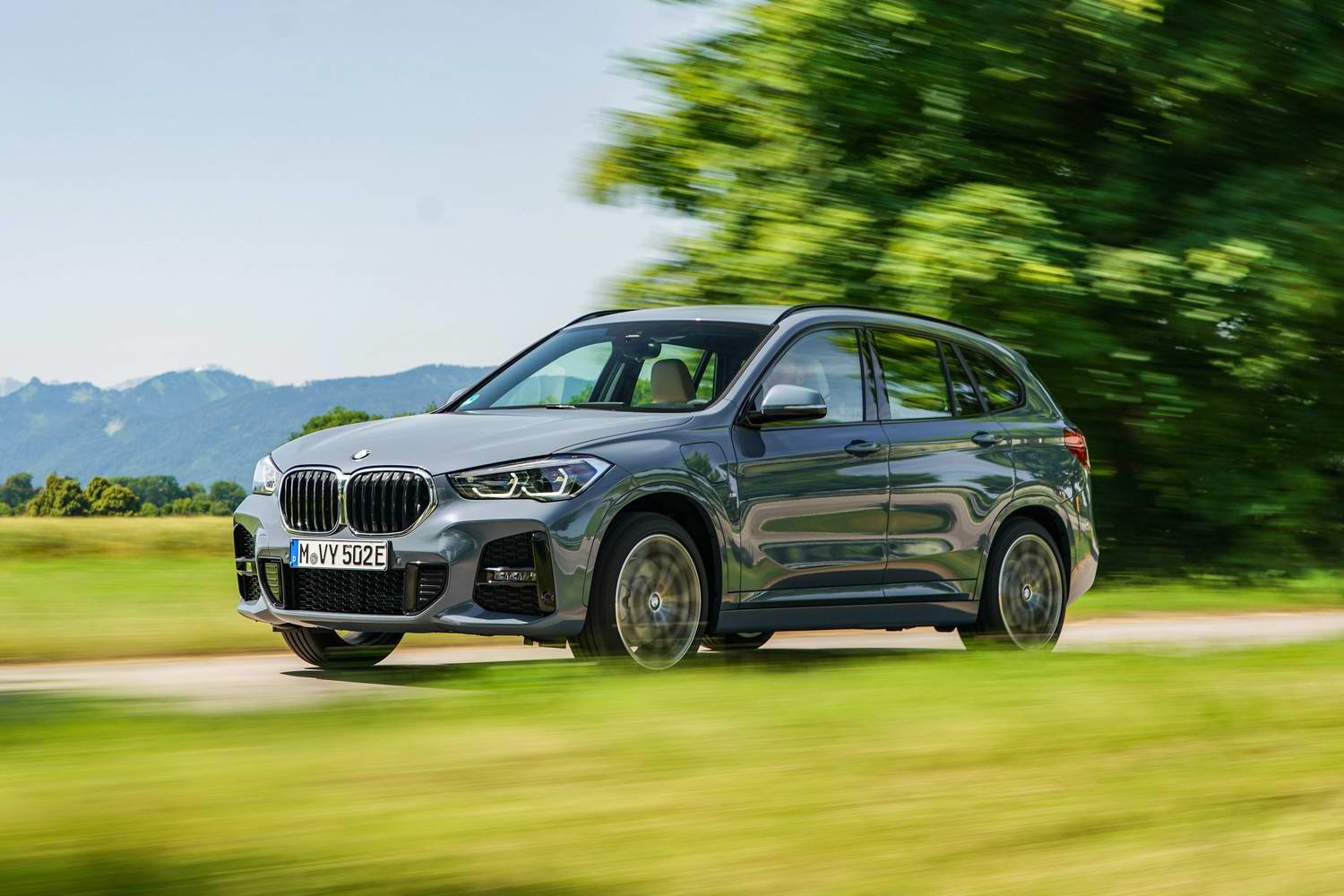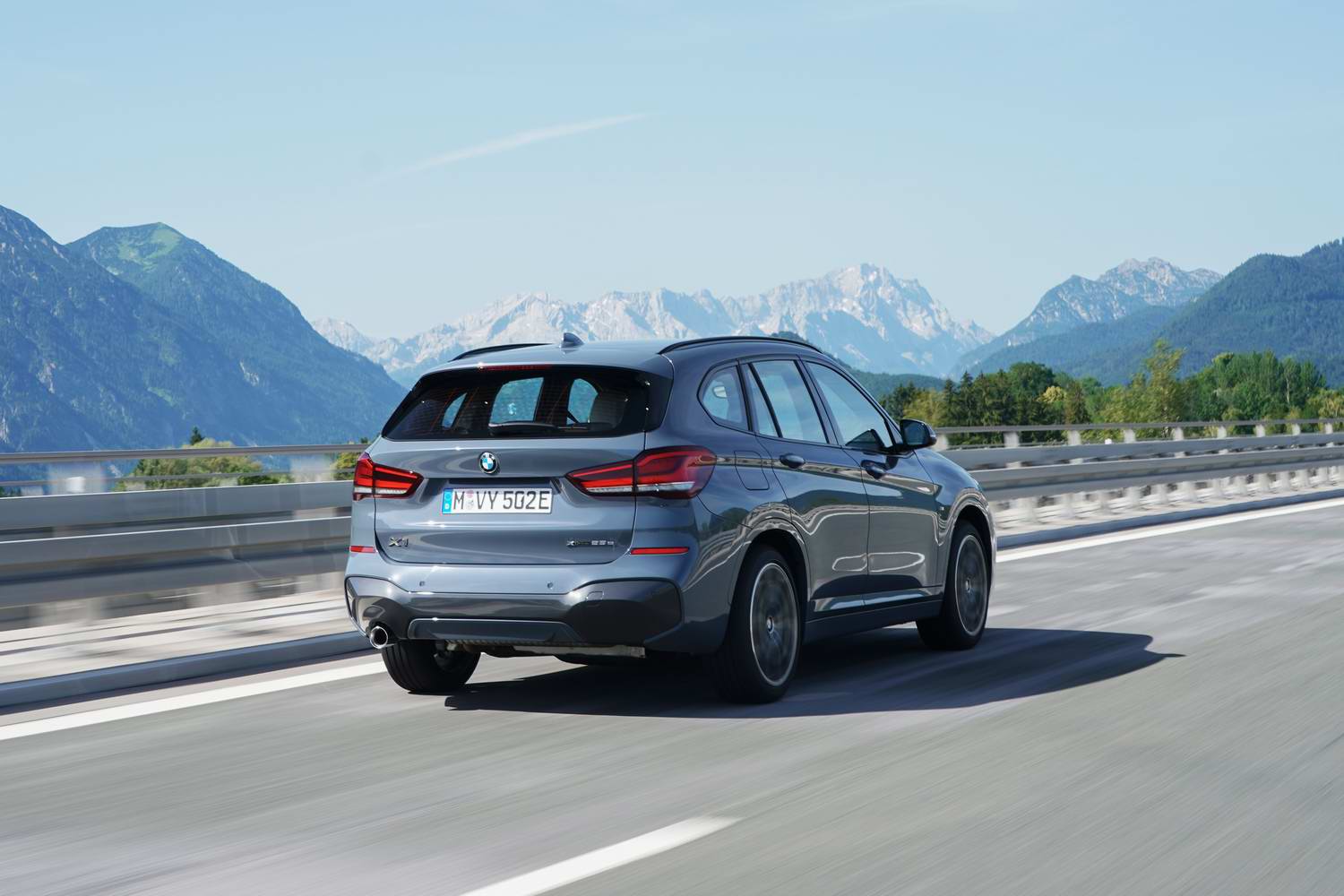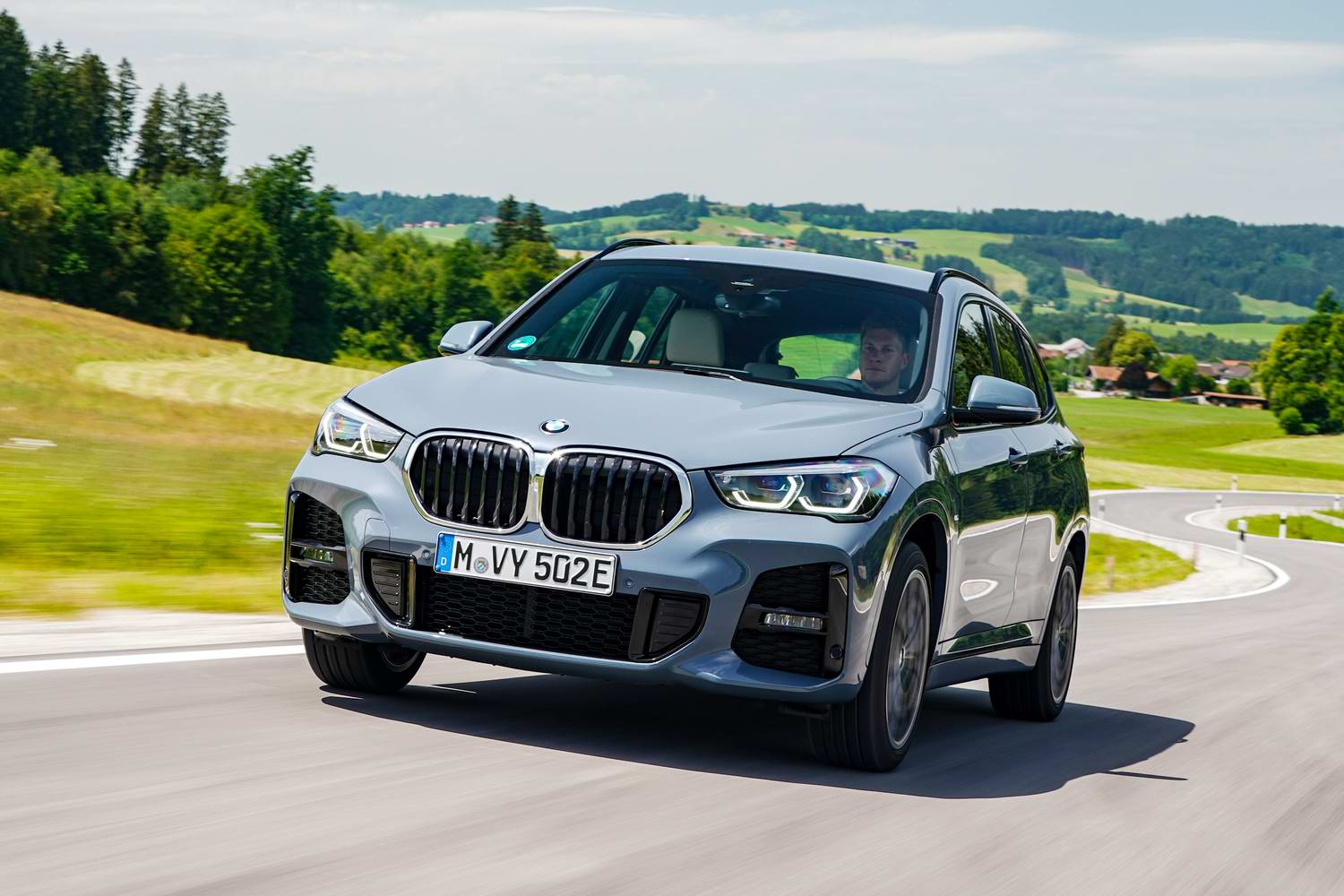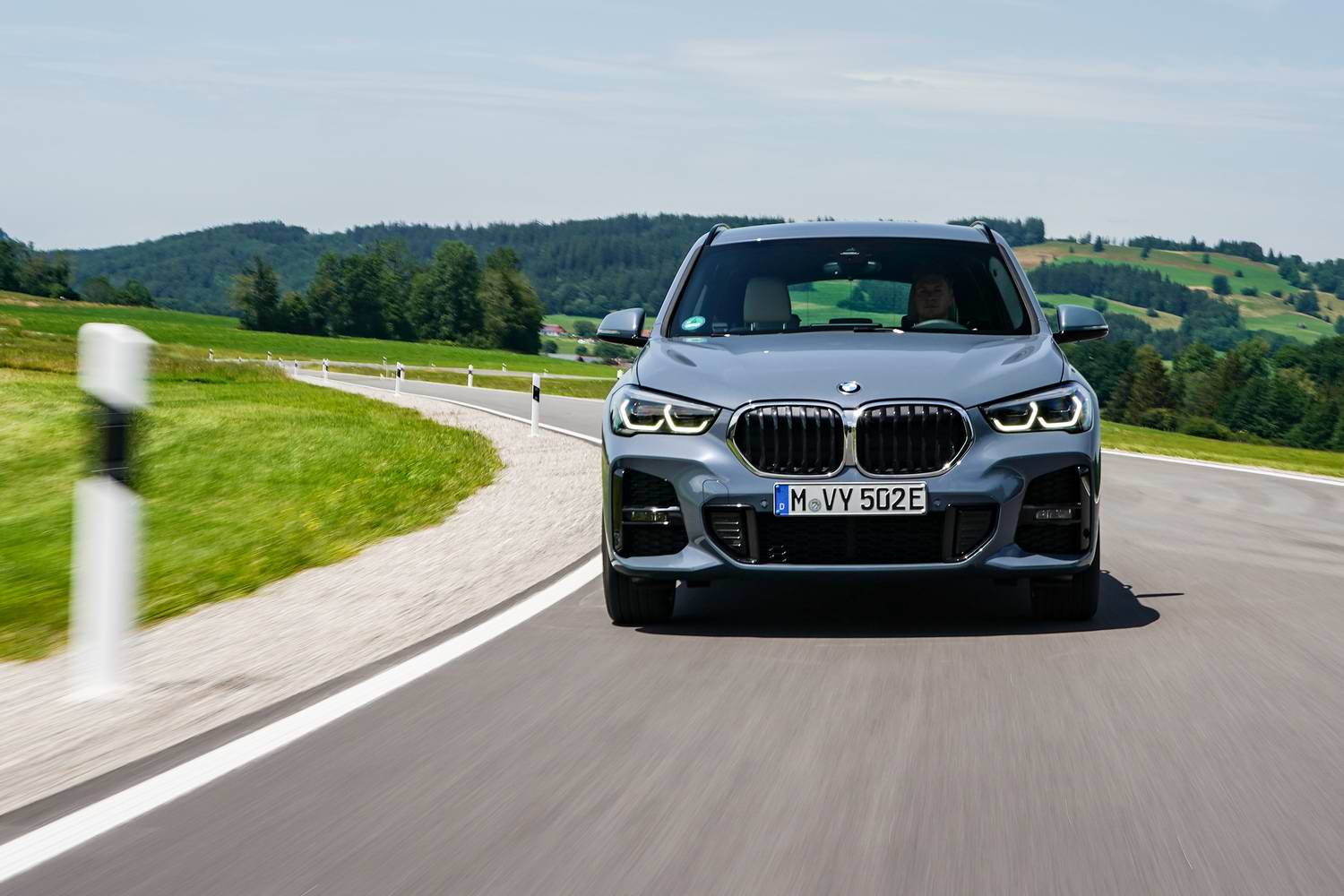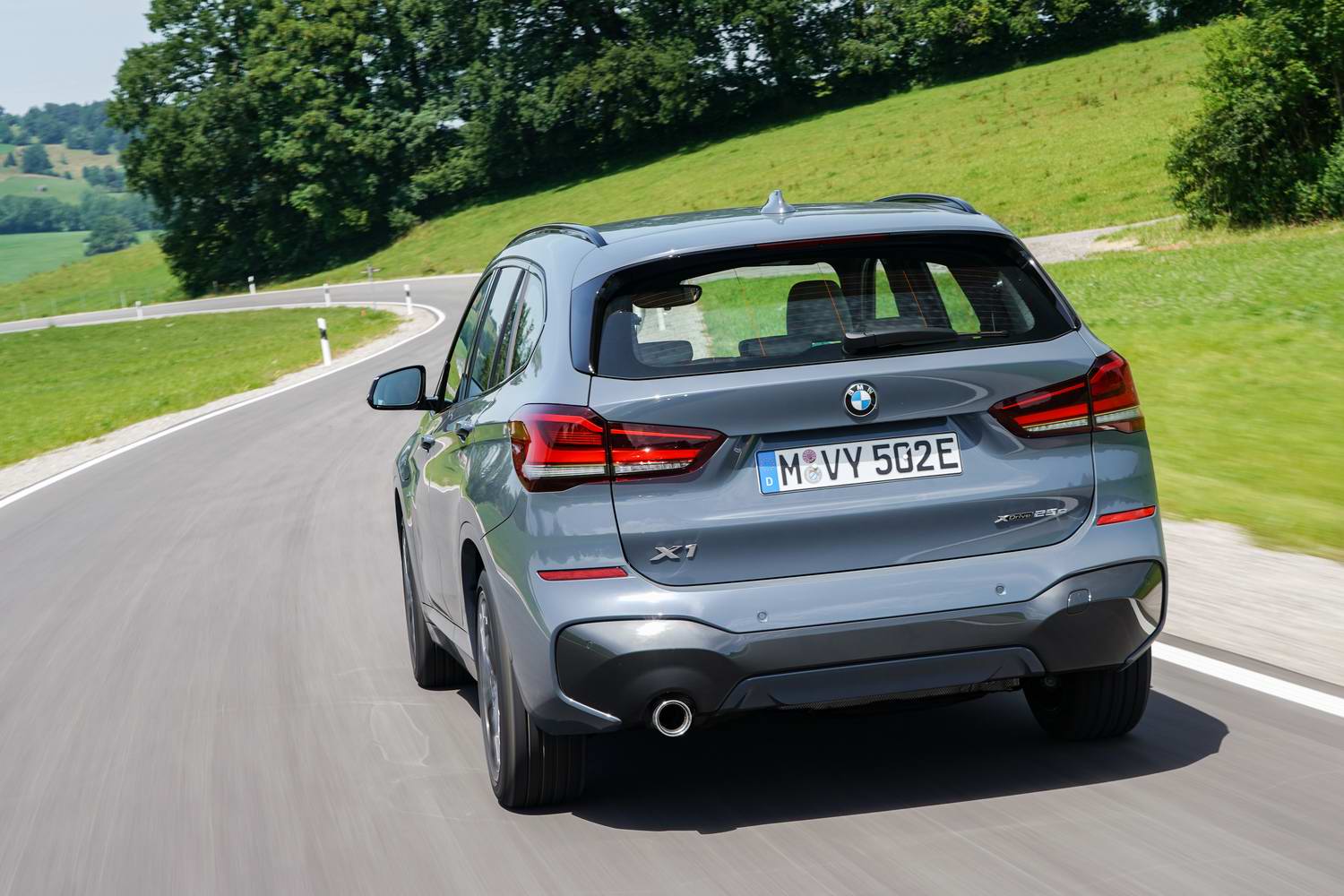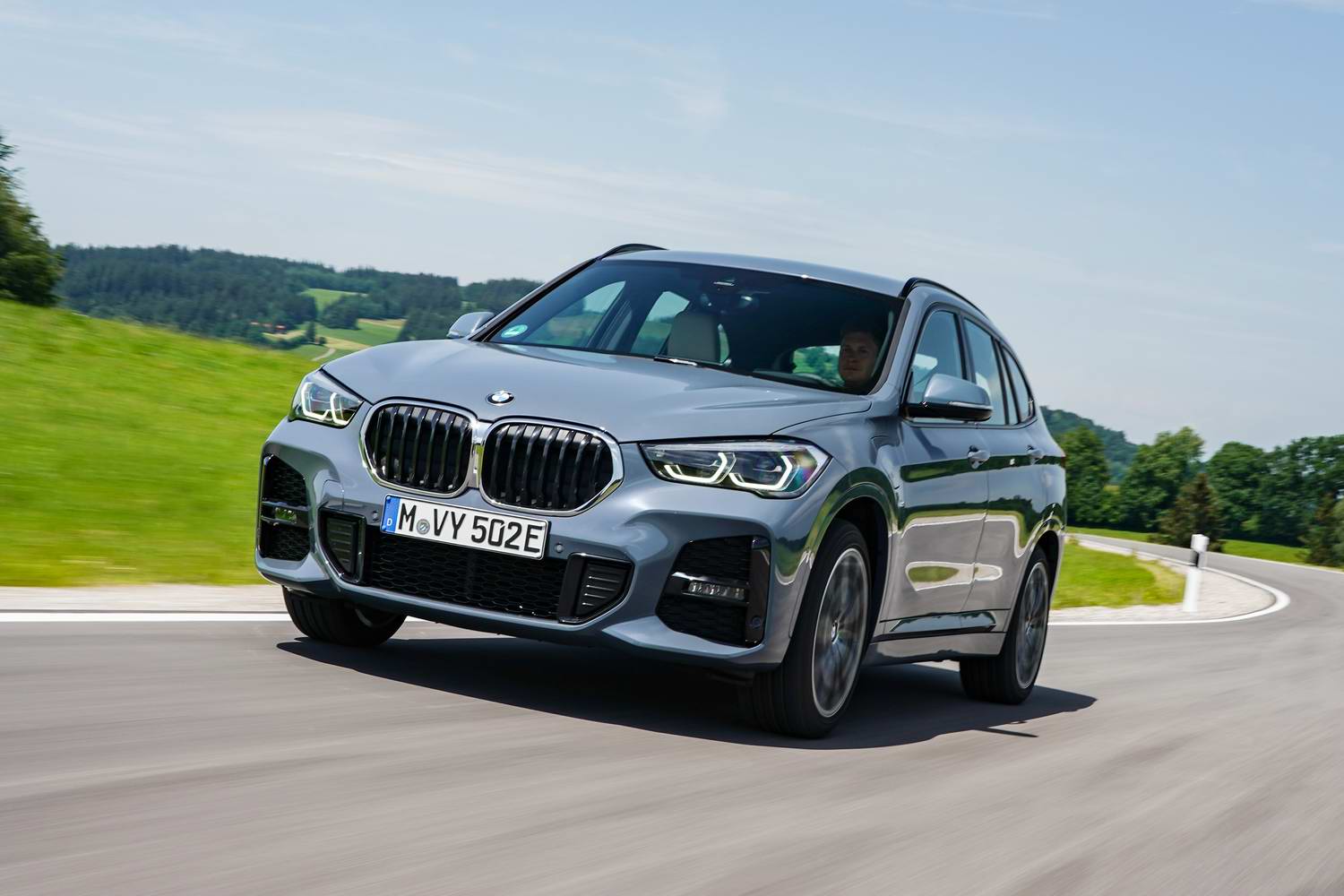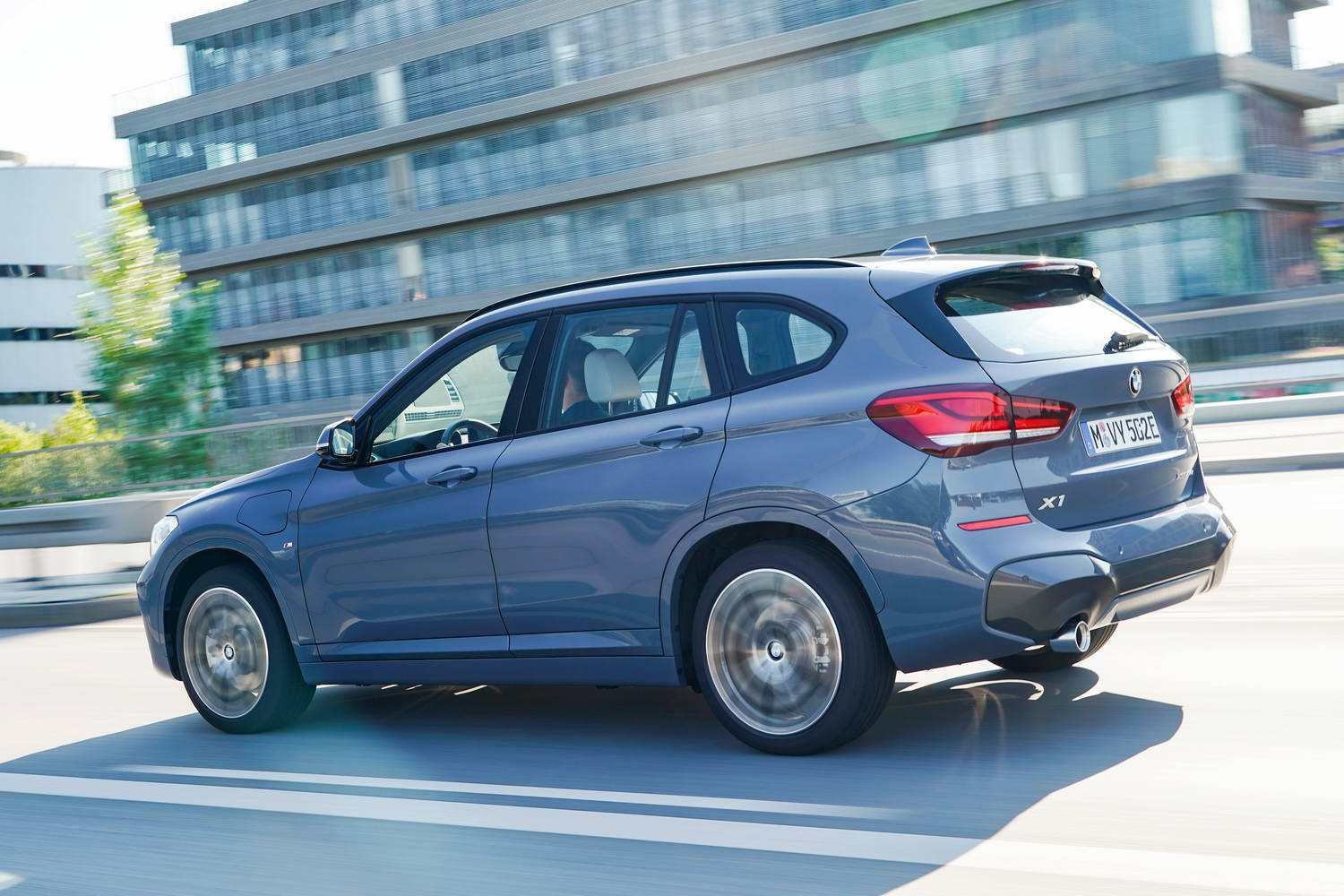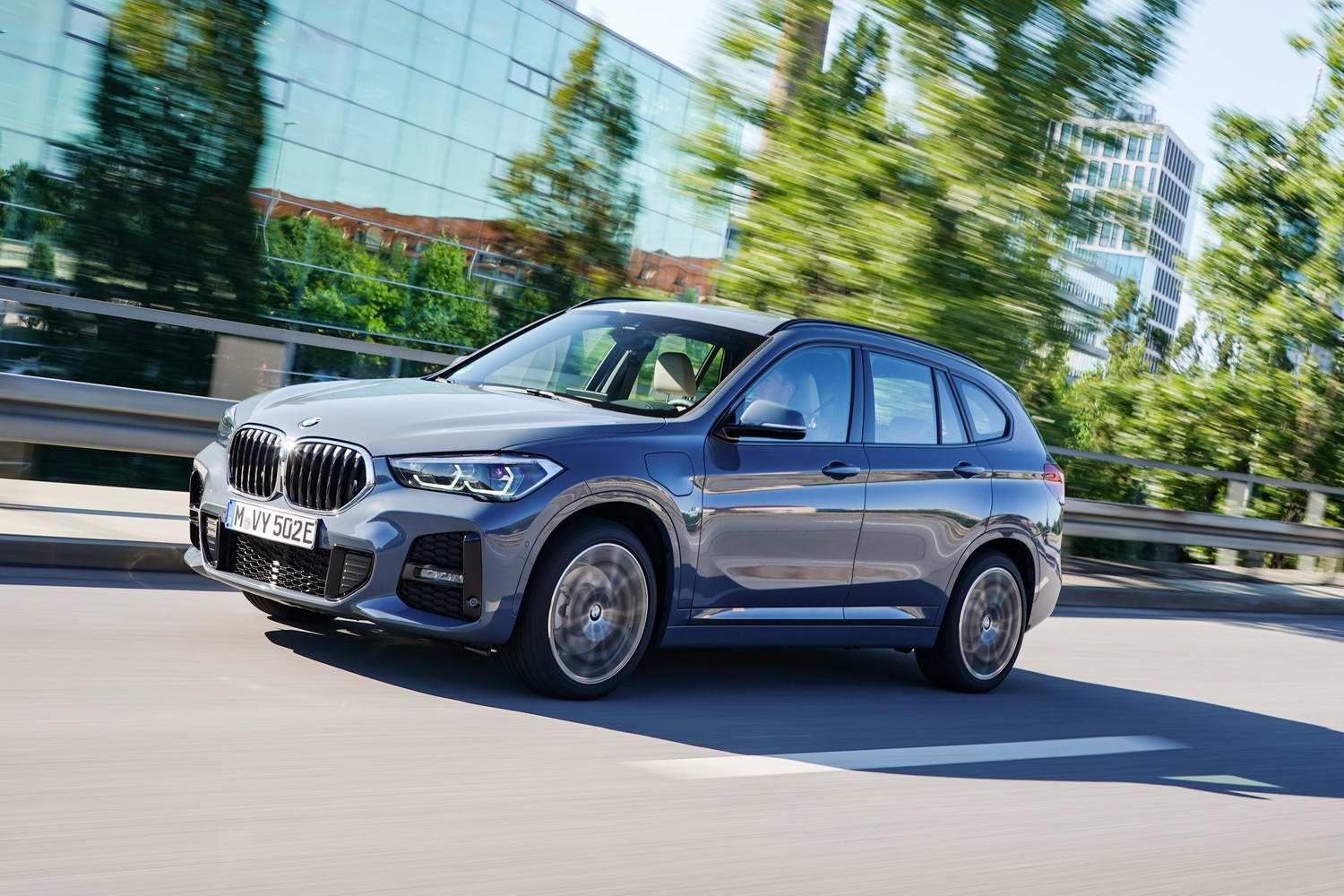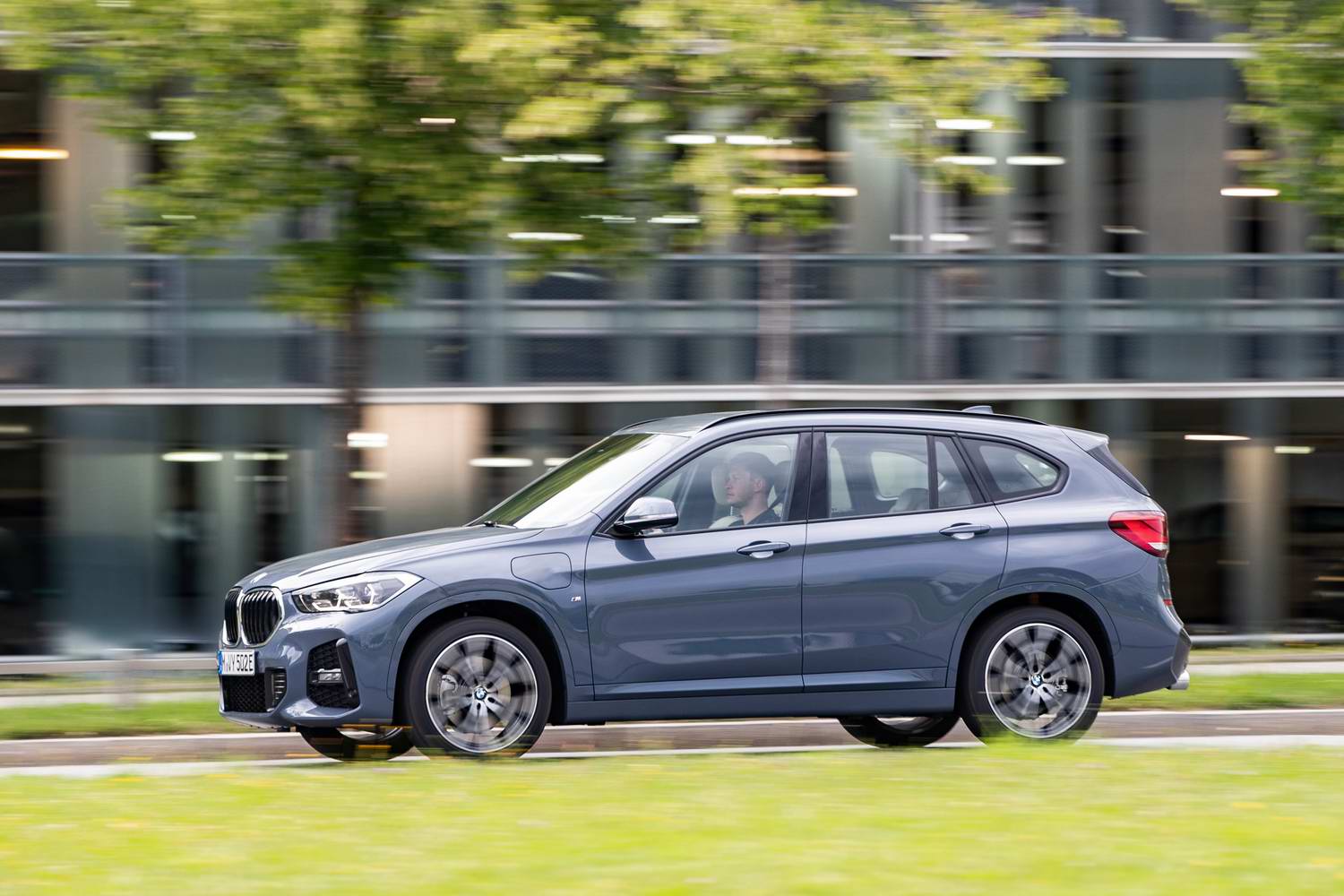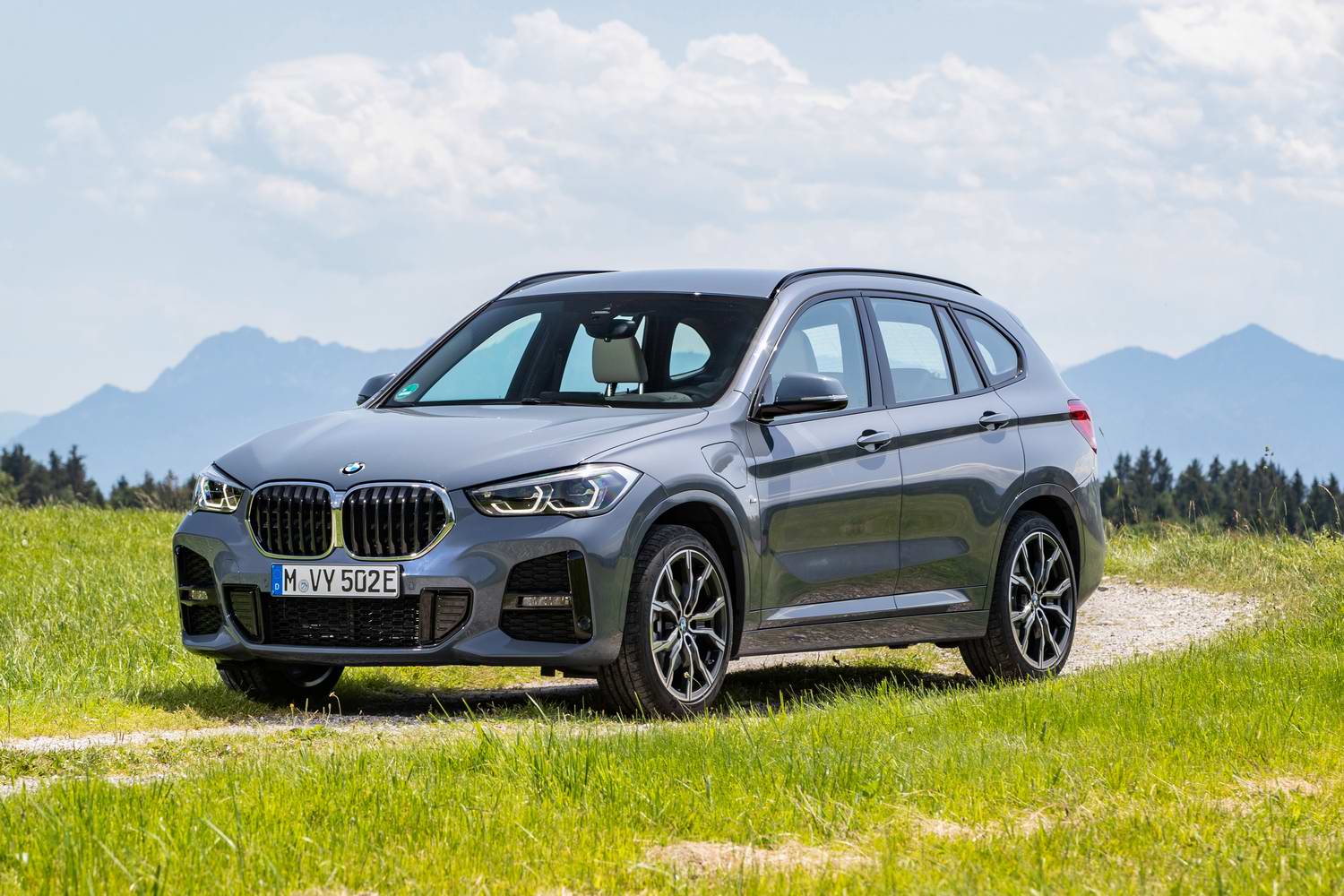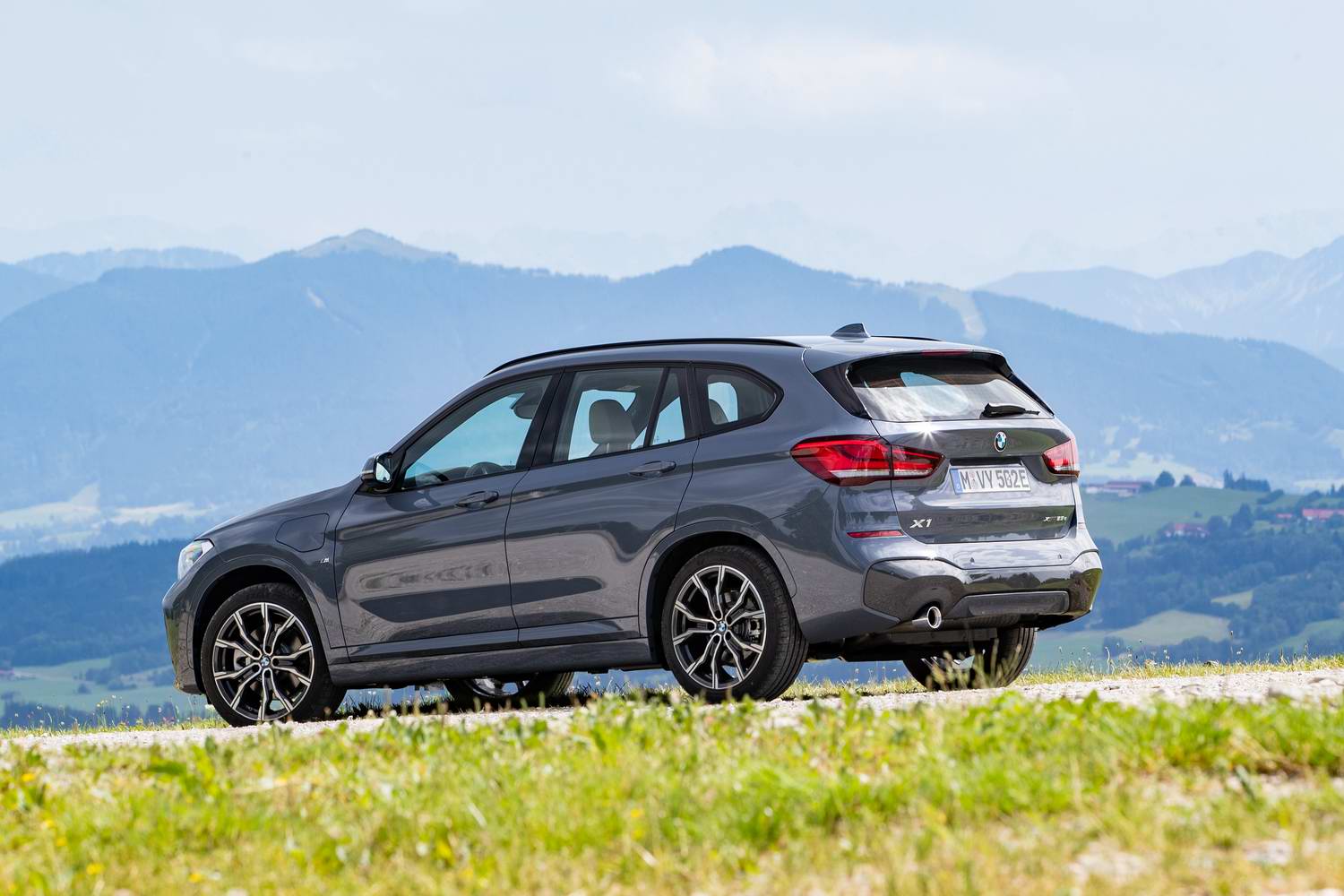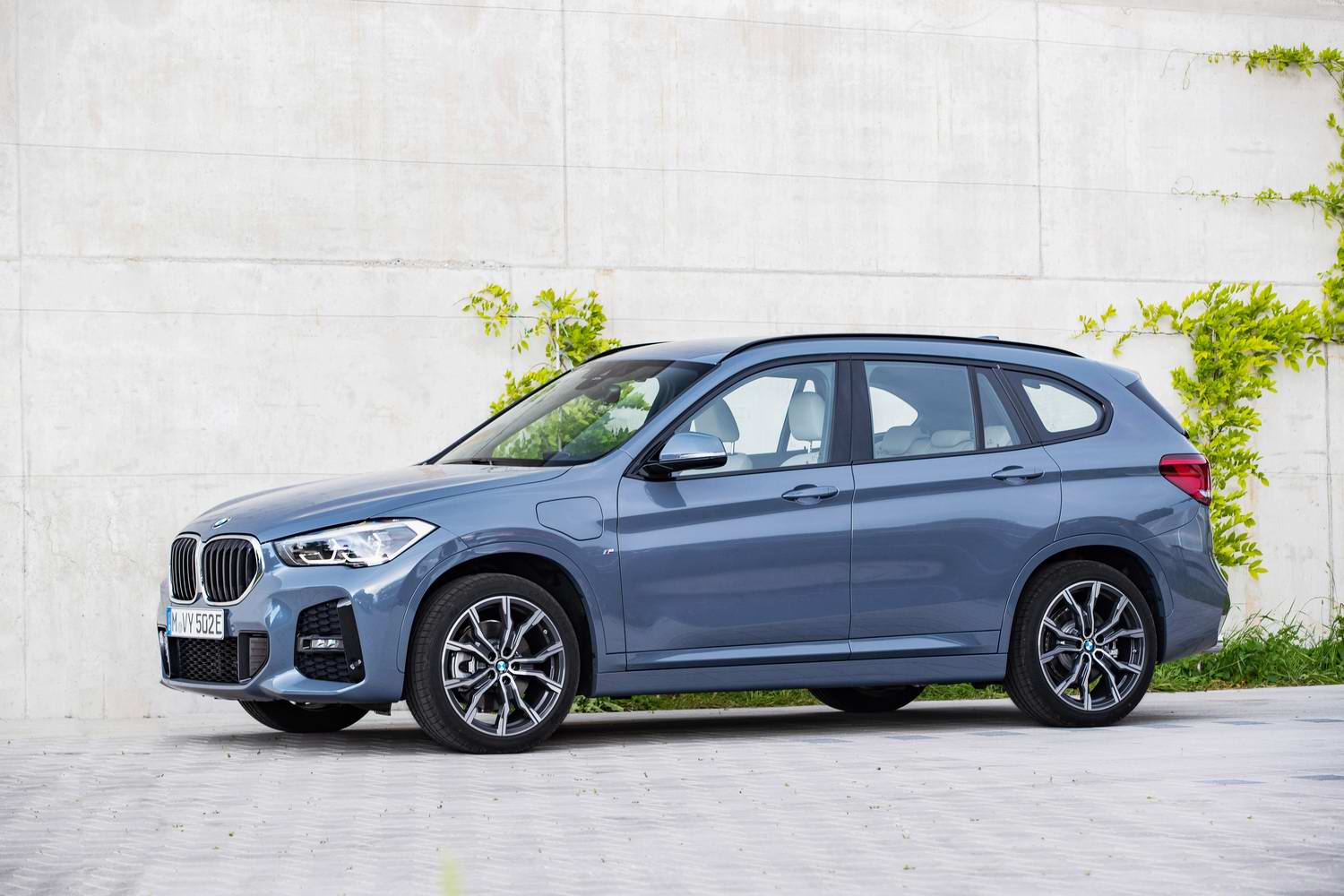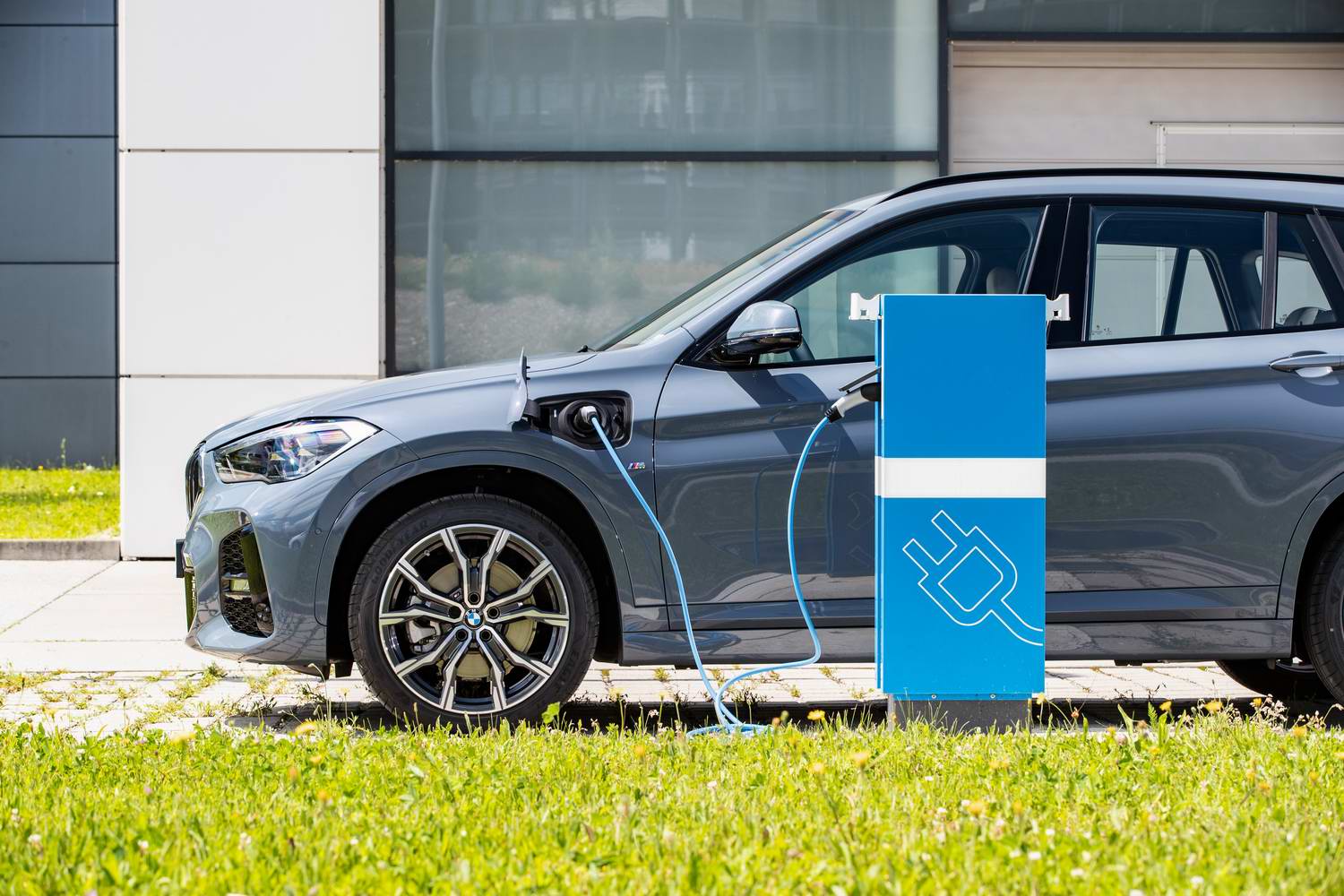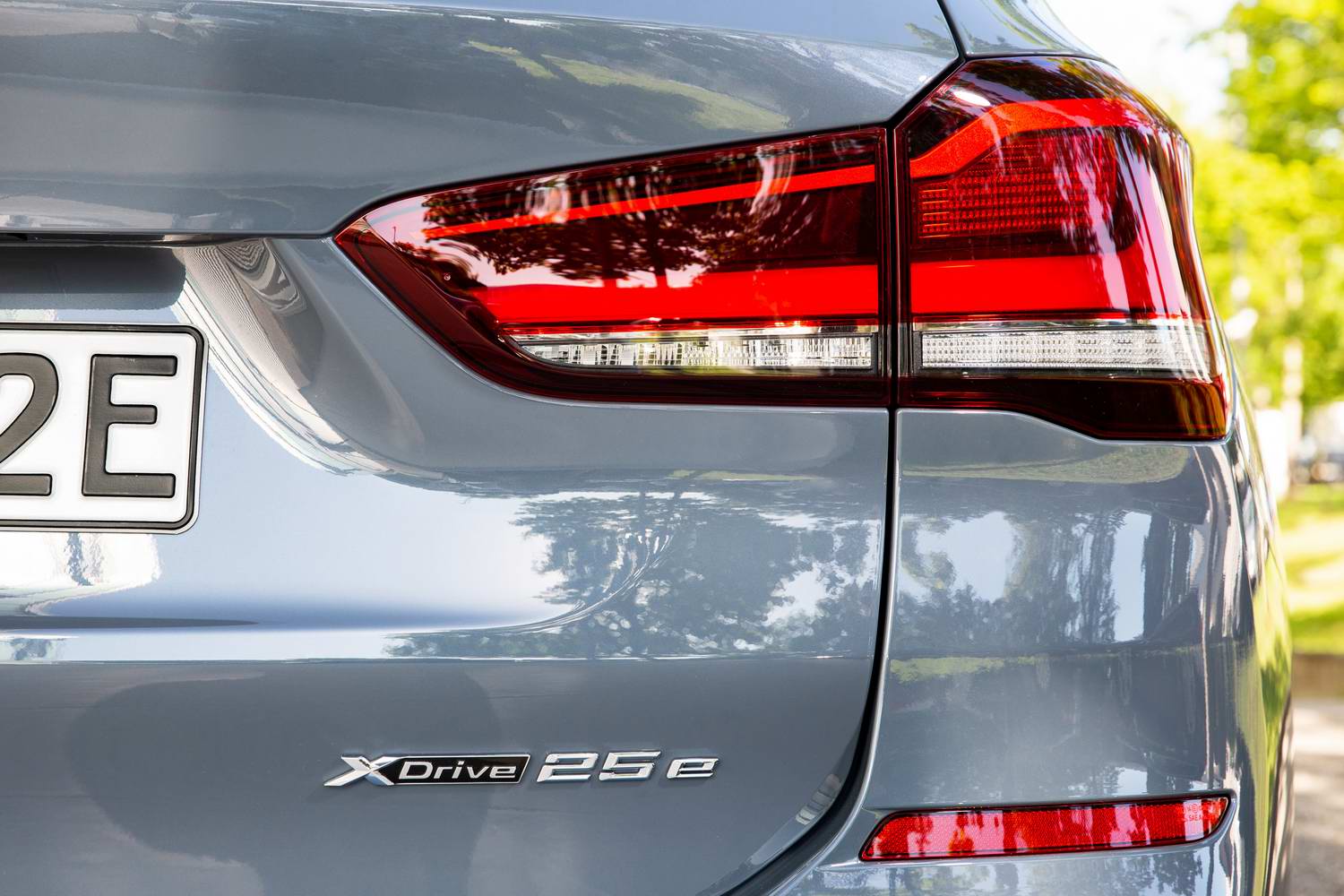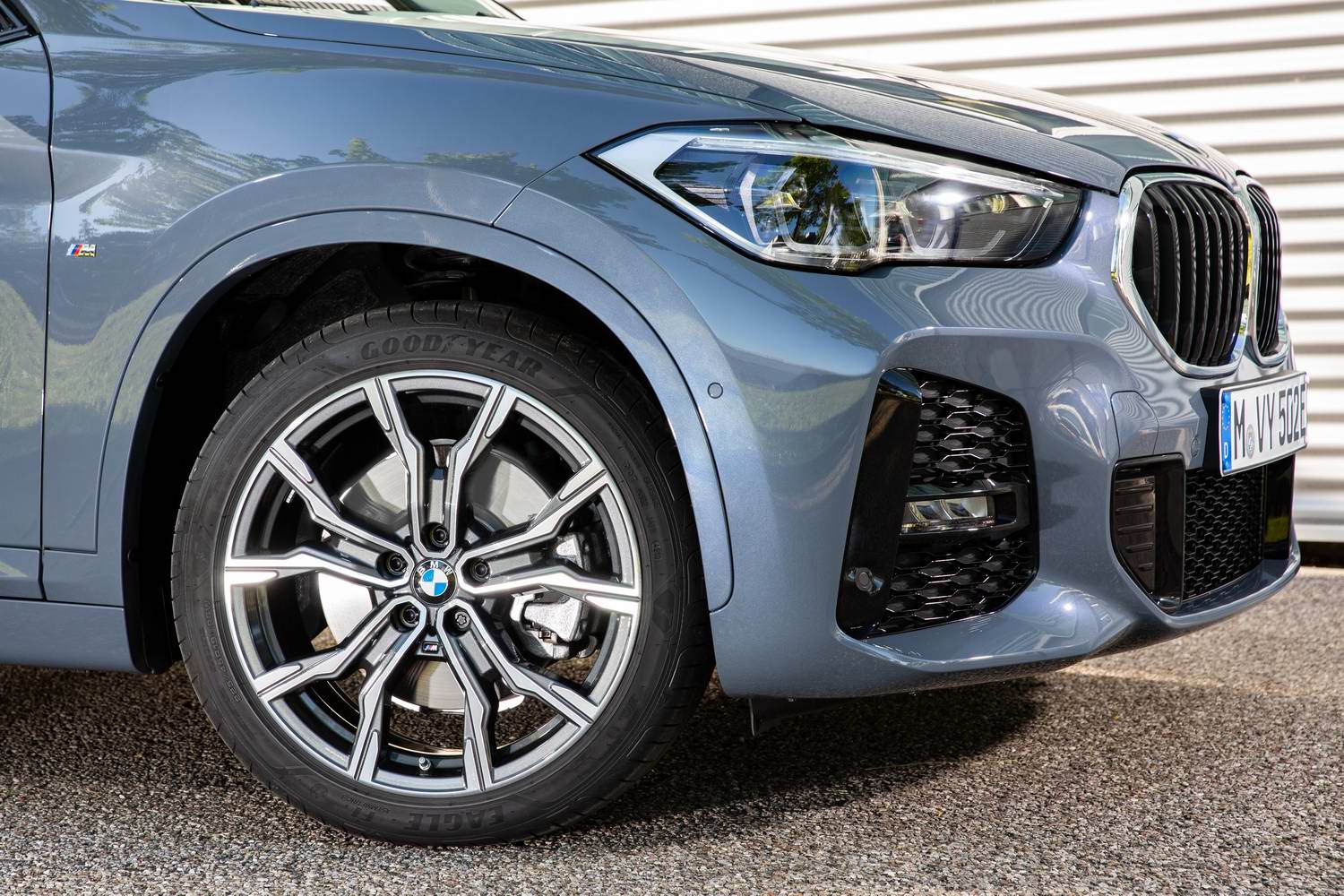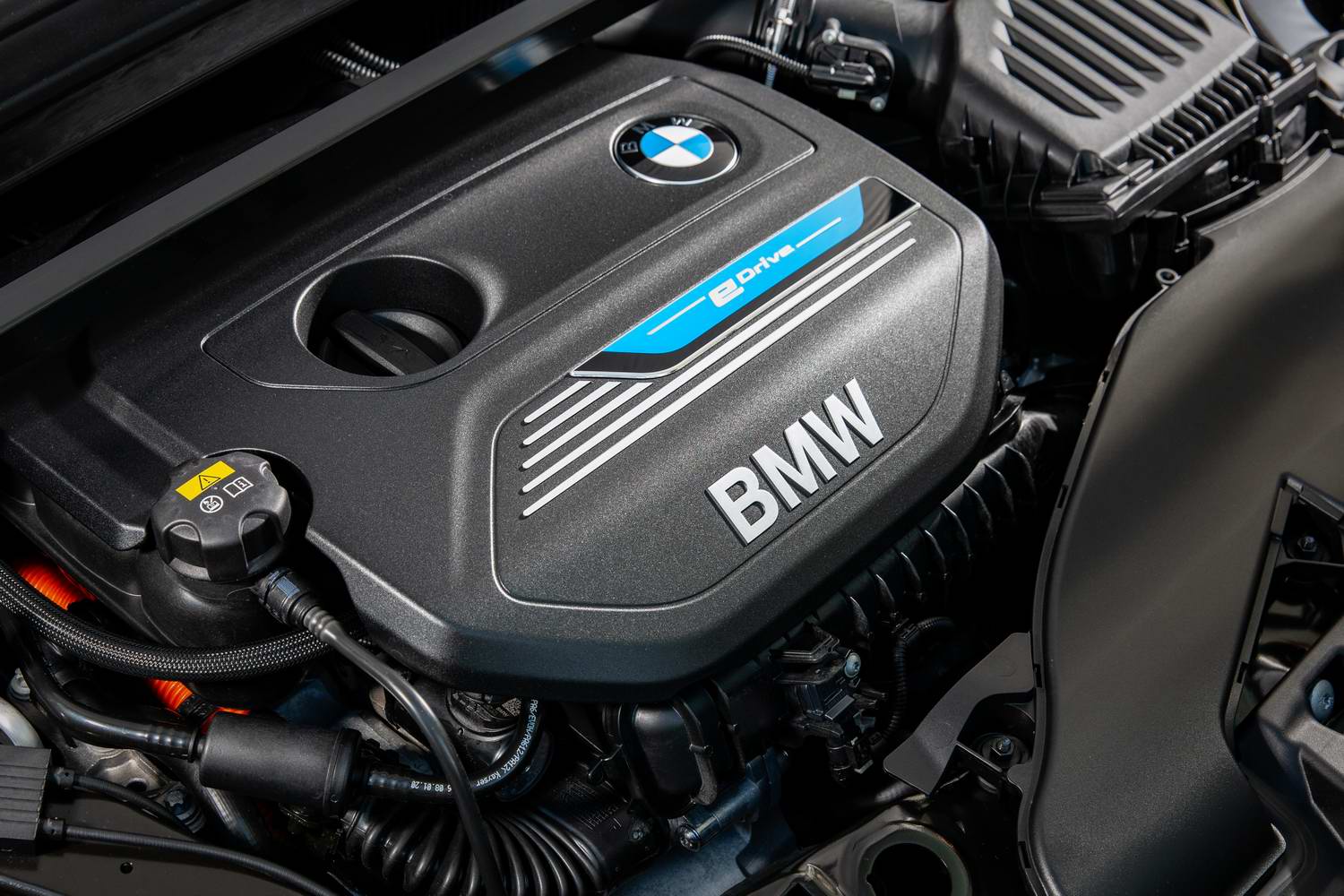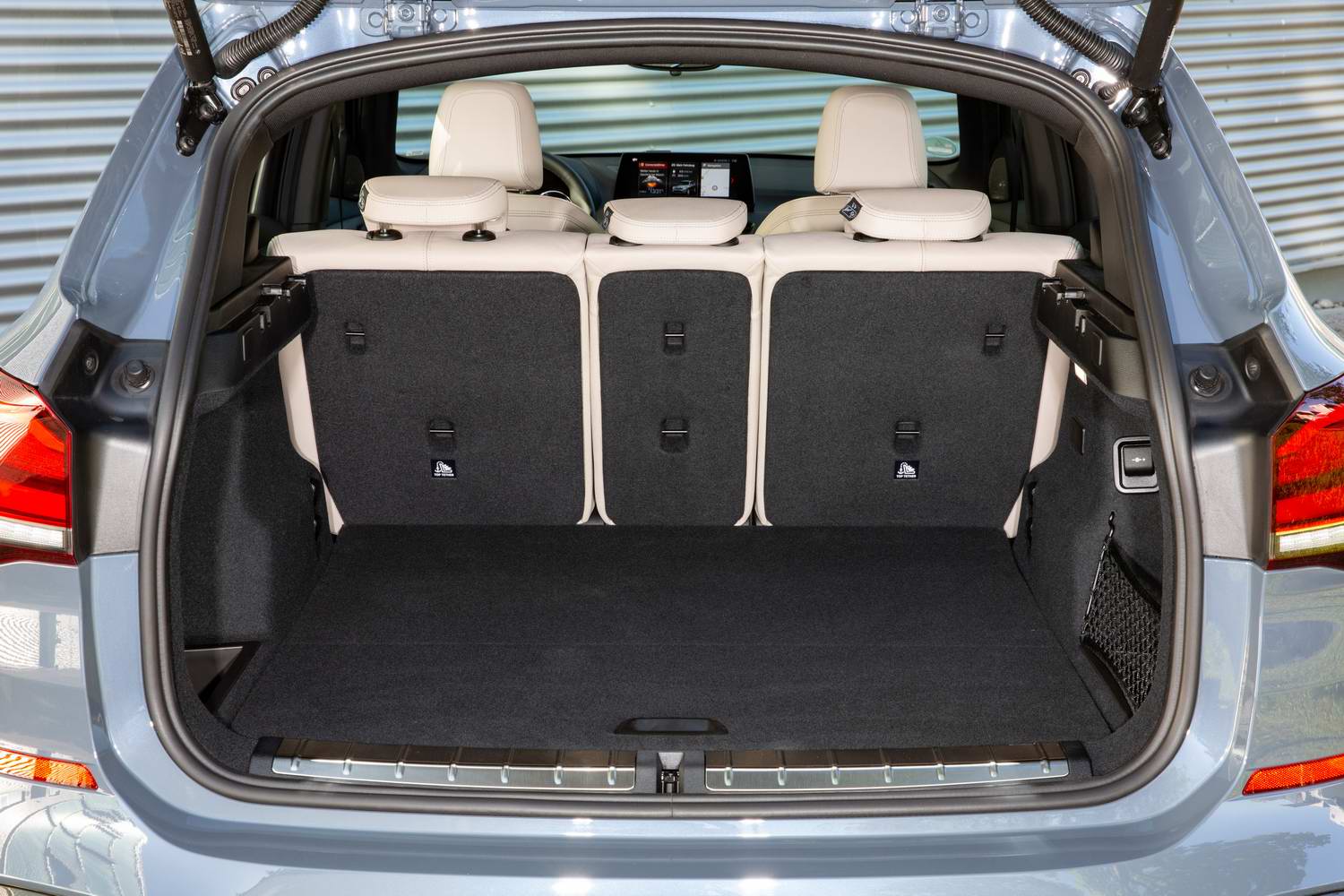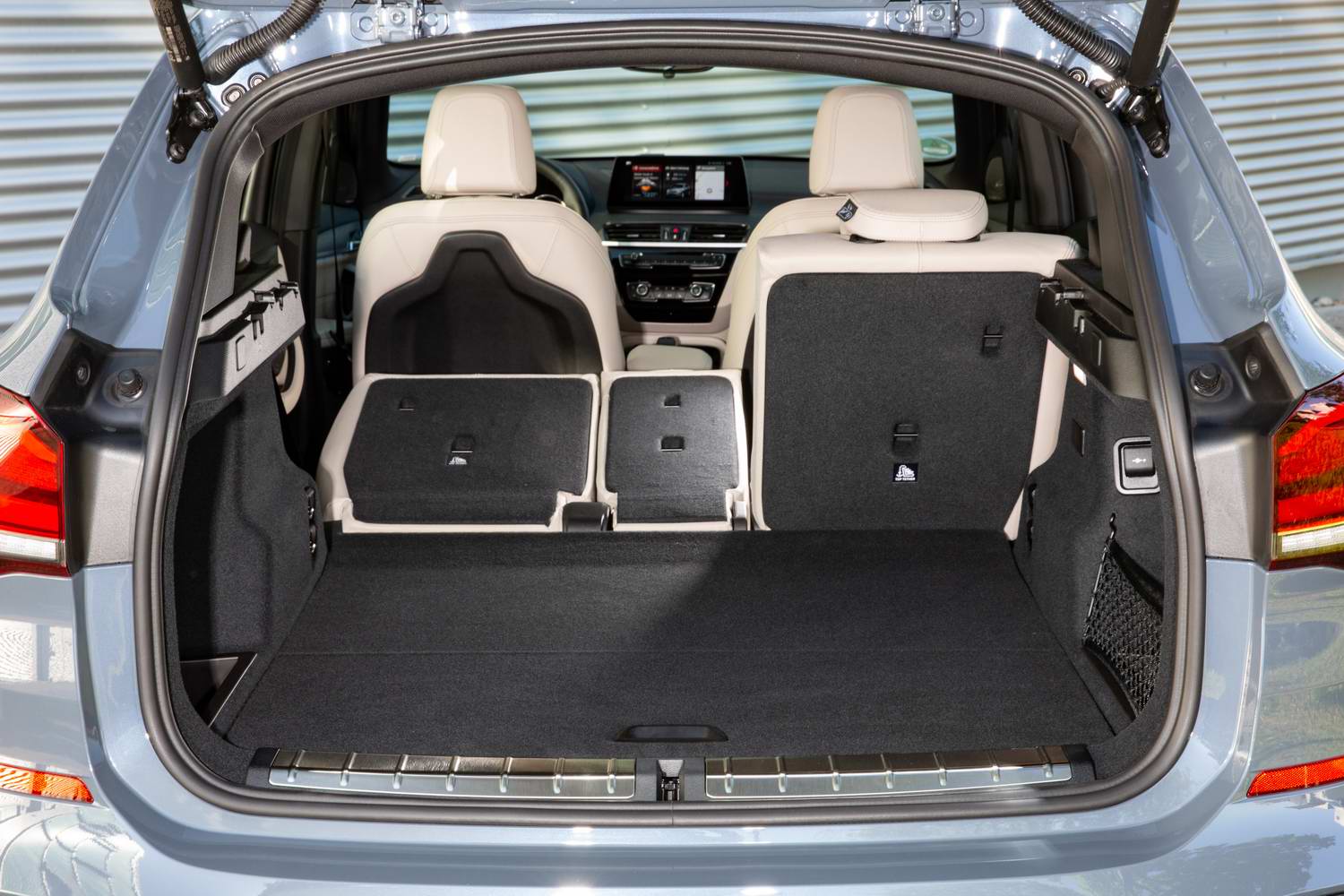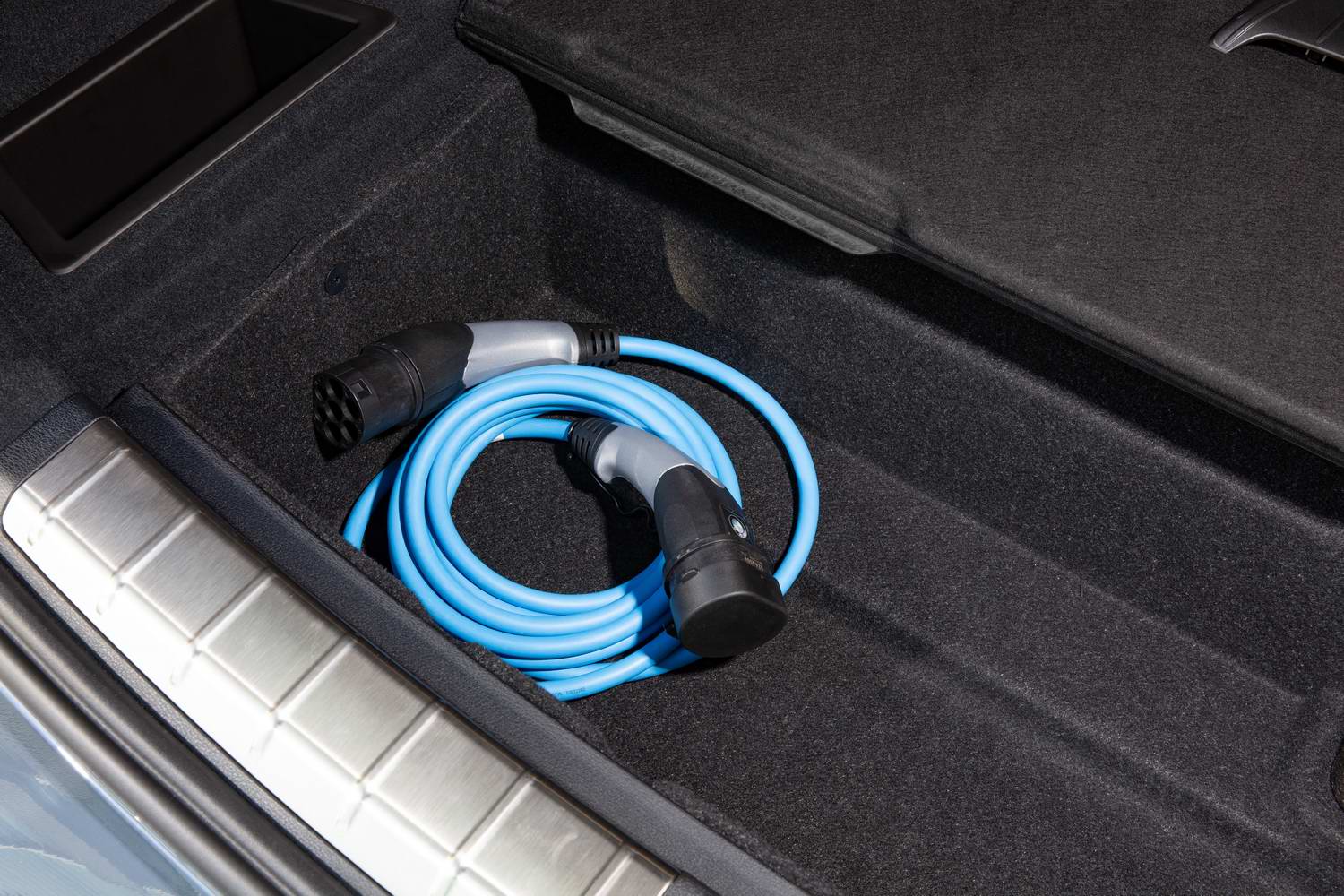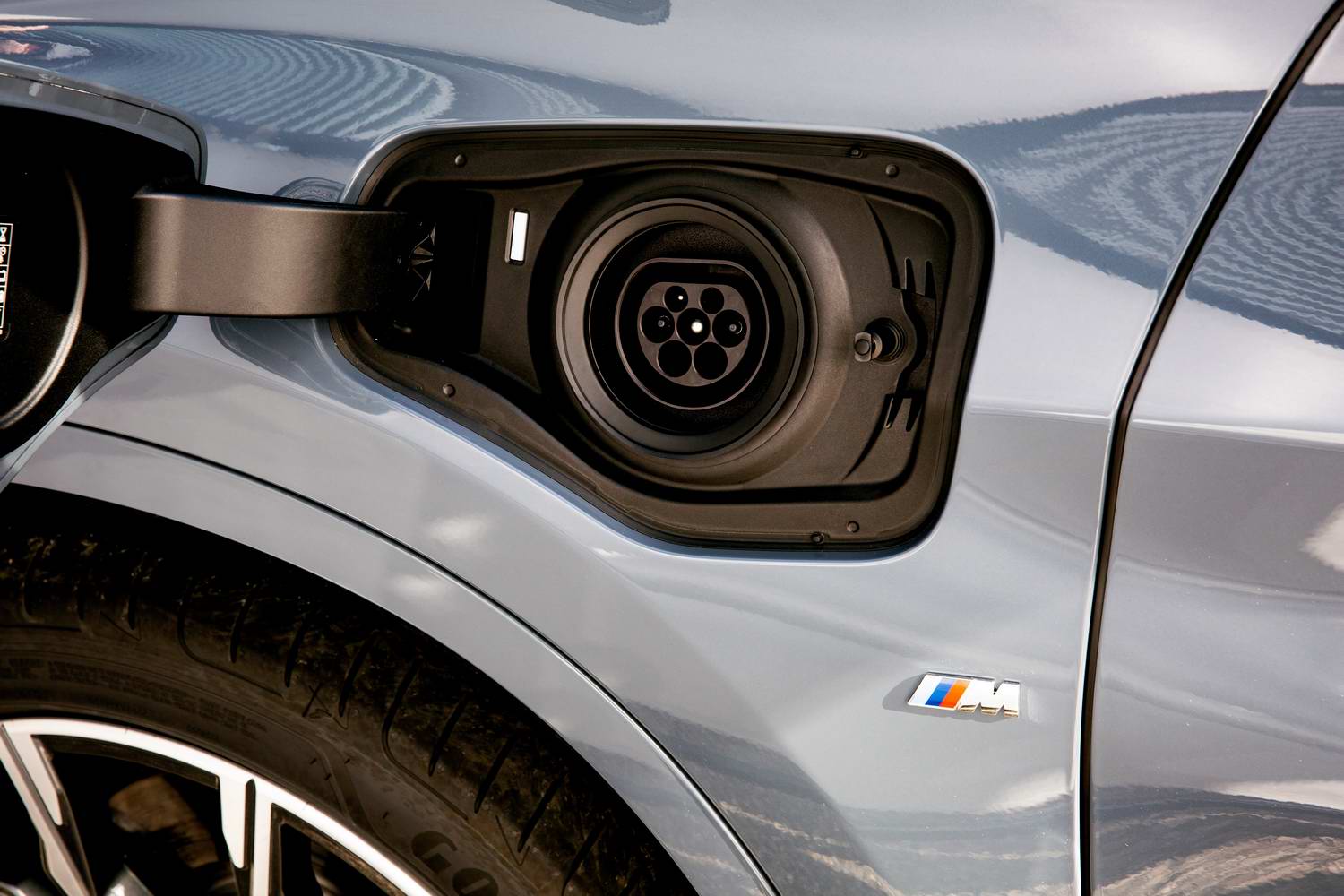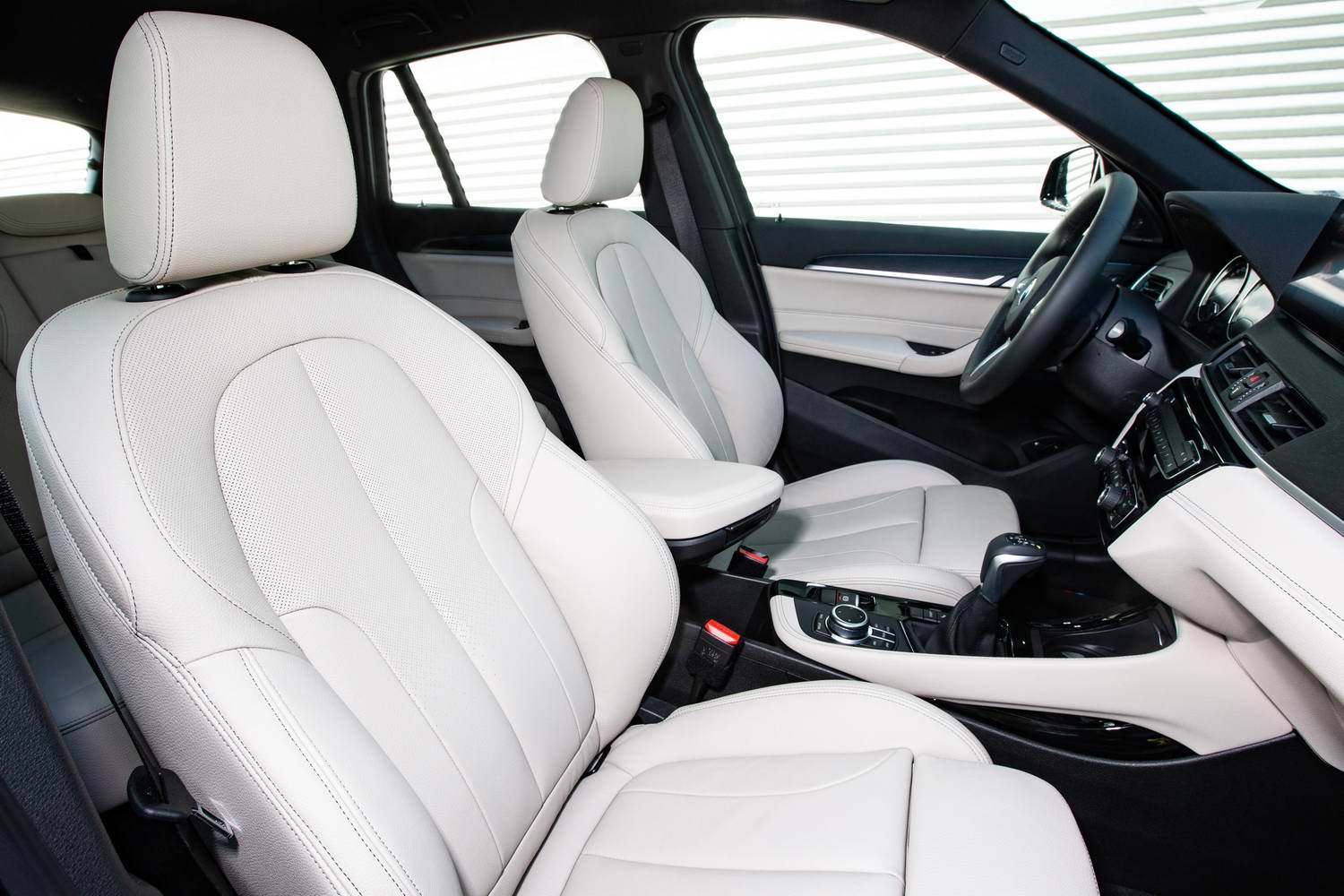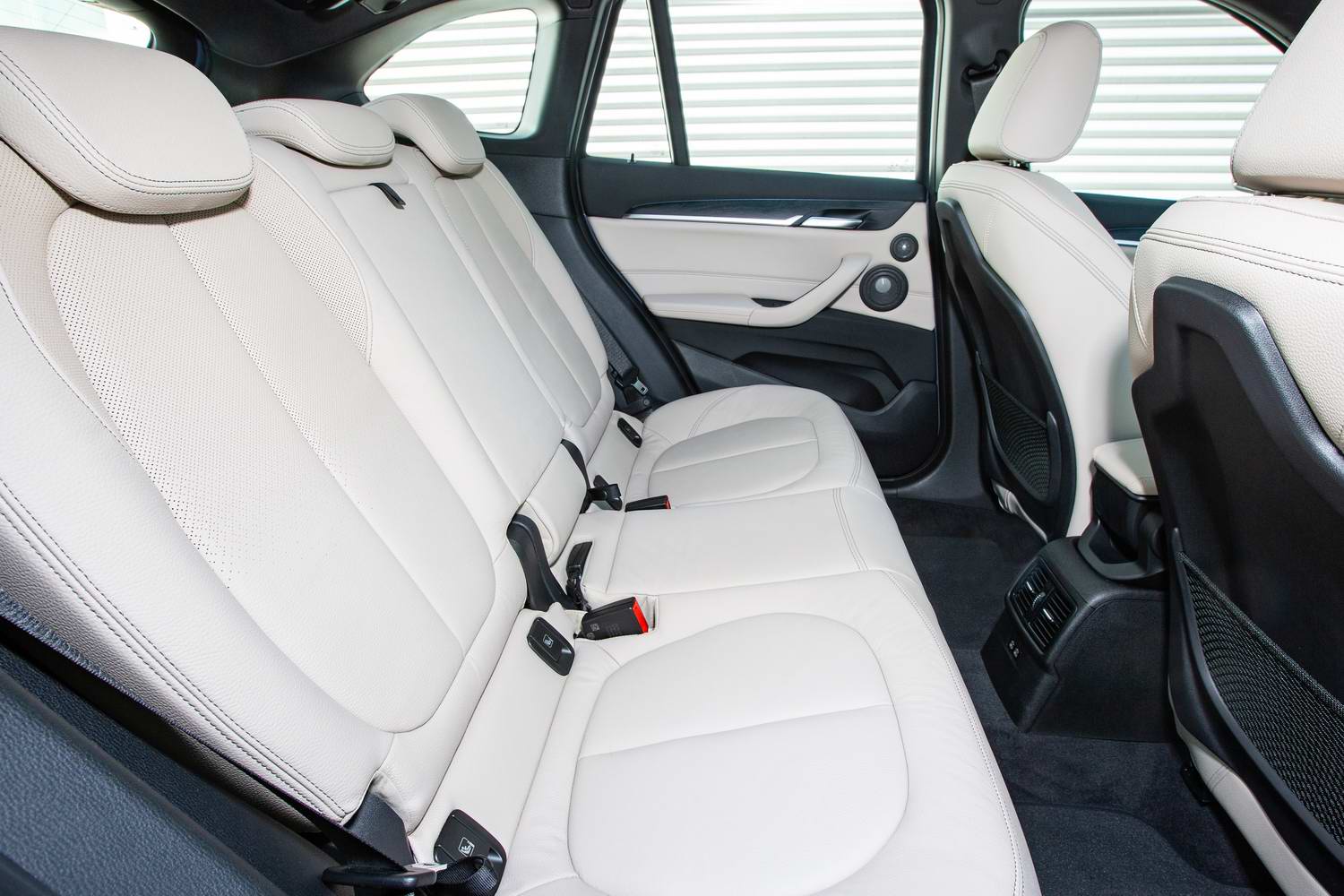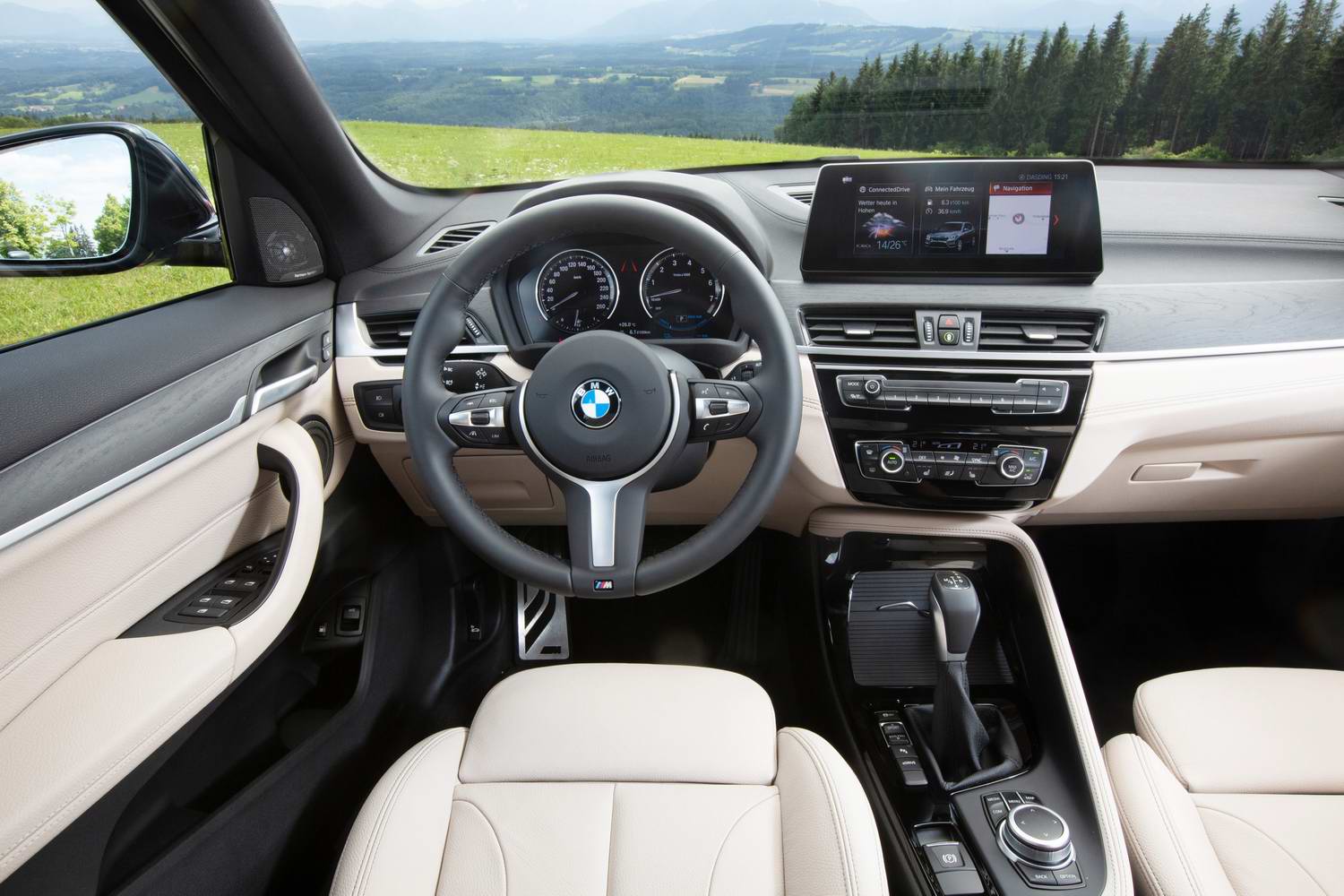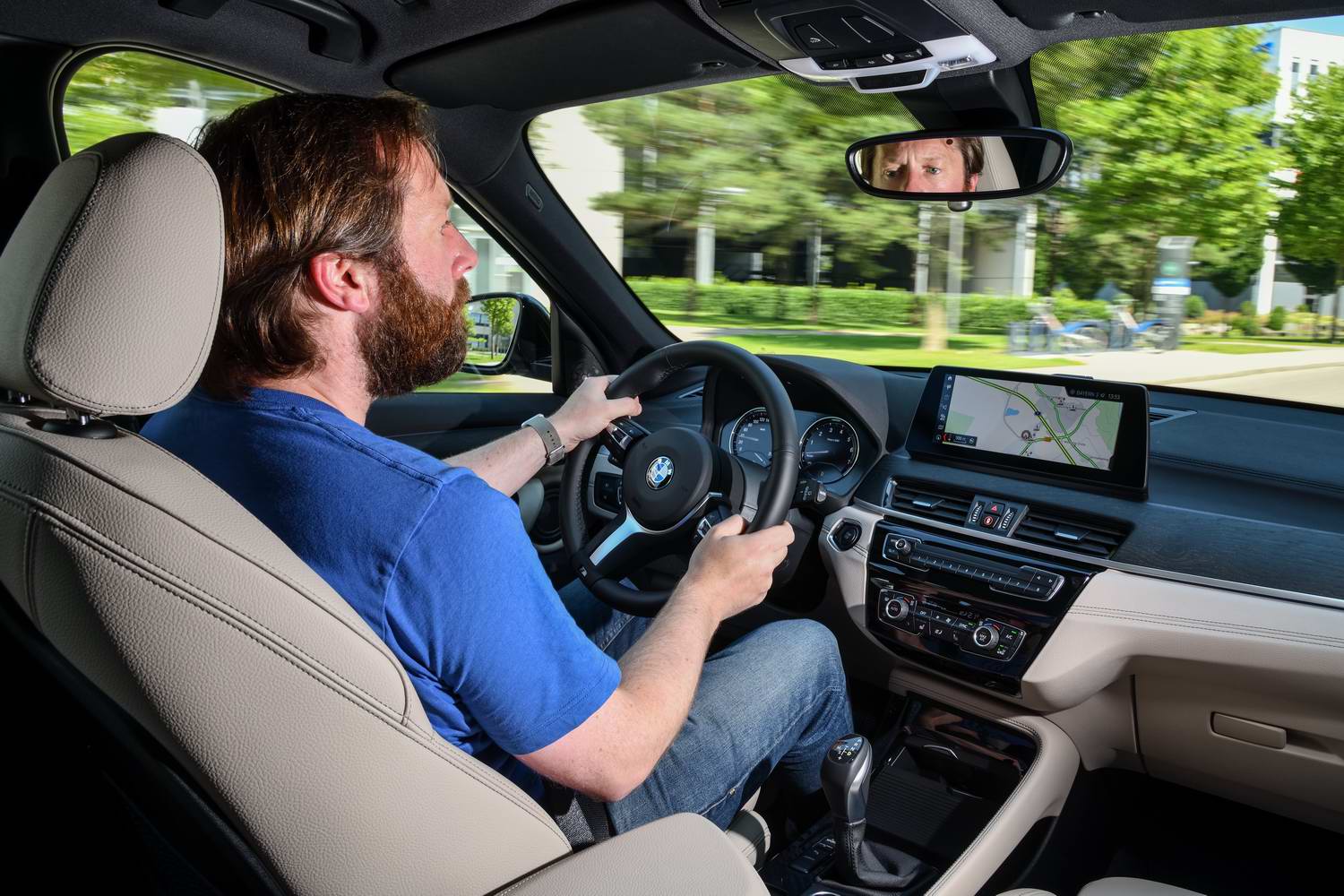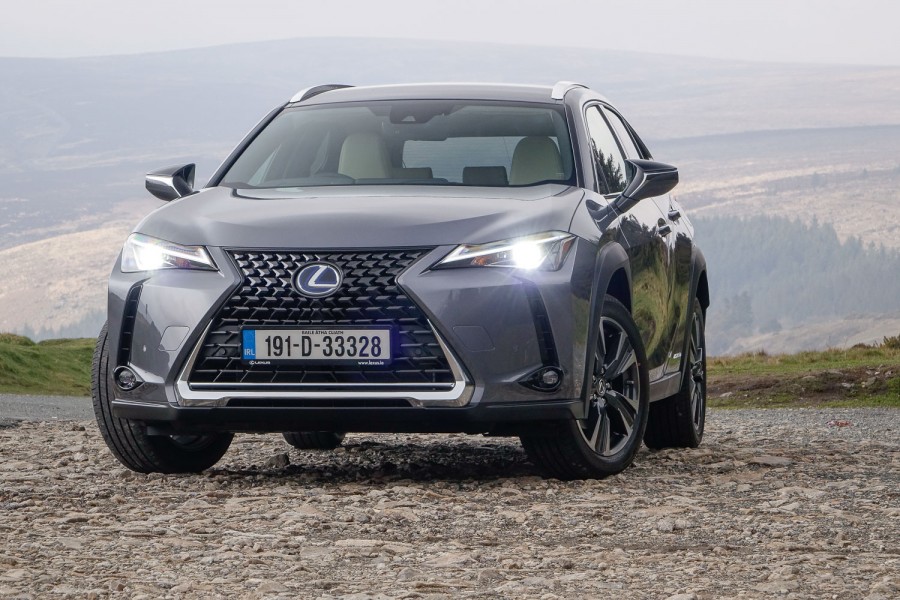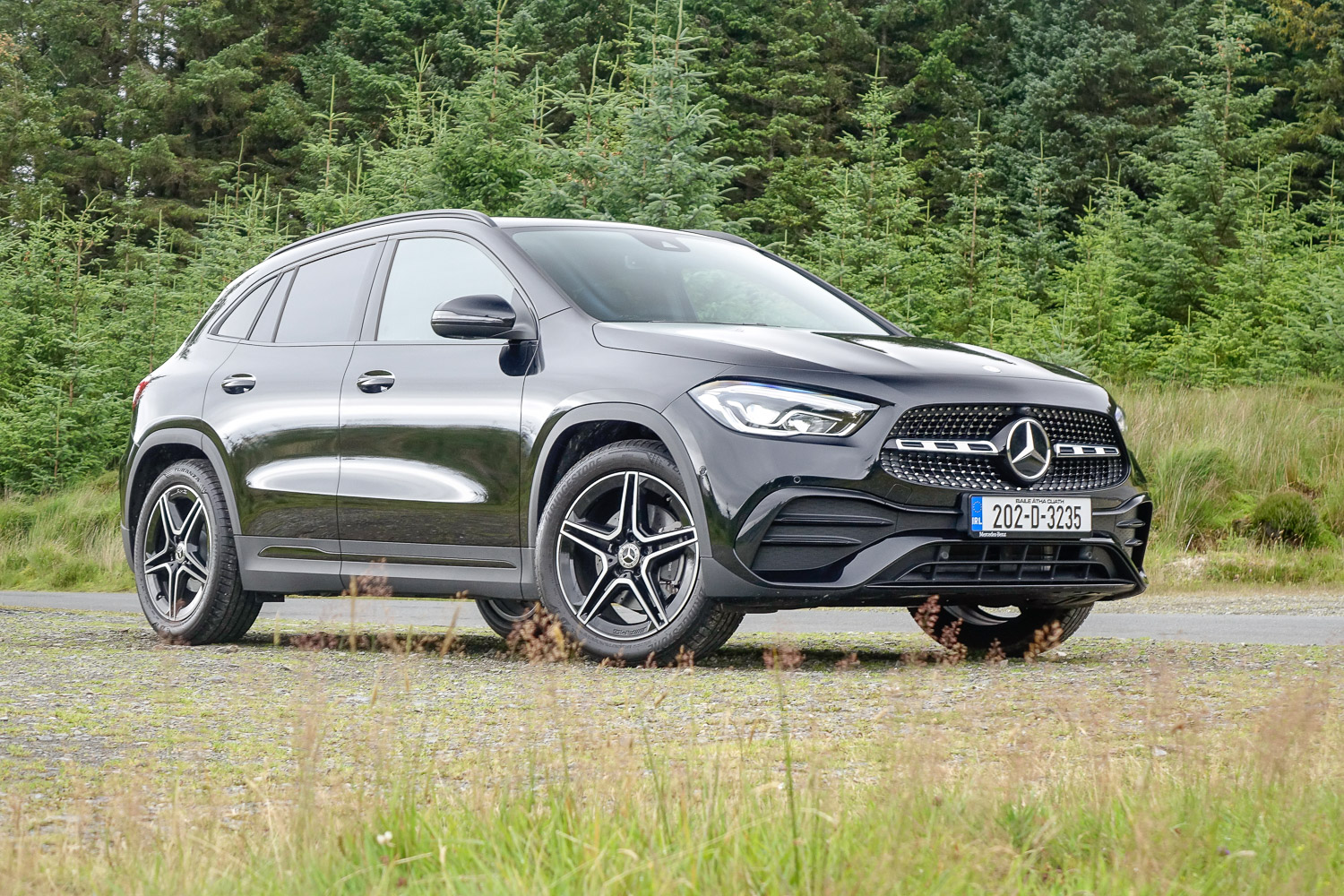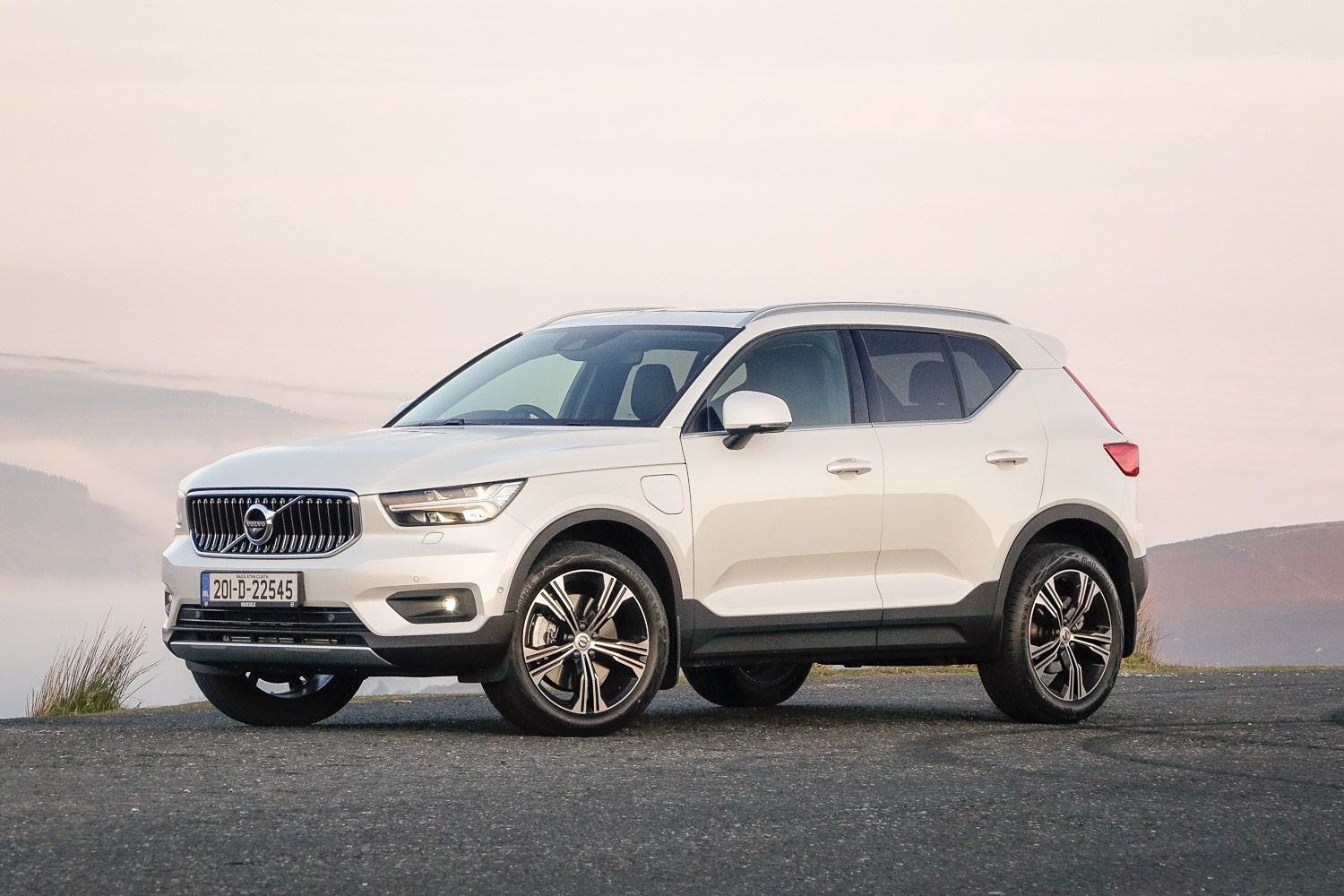Just like the larger SUVs in BMW's range, the addition of a plug-in hybrid powertrain adds a further layer of appeal to the BMW X1. It offers a decent amount of real-world electric driving range and has lots of visual appeal too.
In the metal
BMW's baby crossover has a look that is every bit as attractive as its larger relations in the line-up. The kidney-grille-to-car ratio is preferable to that of the larger X5 or X7 models and, along with the headlights and tall roofline, the X1 looks every bit the proper SUV, only smaller. Other than the battery charge port on the top of the front left wing and the 'xDrive25e' badging on the rear, there's nothing else to differentiate it from the other combustion-engined versions.
Unlike the sportier and lower-slung BMW X2, the X1 is a more conventional design. The taller roofline not only benefits headroom, but also affords the driver and front passenger an excellent view of the road ahead thanks to the vast (for its overall size) windscreen. As you might expect from a premium brand, the interior is well-finished and has a pleasing blend of high-quality plastics and leather upholstery. There are a few storage areas dotted around the cabin for small oddments, and all of the control functions are laid out in a sensible and orderly manner. With the battery positioned under the rear seats, there's no real reduction in rear passenger space, and the boot still manages to hold a useful 450 litres. With the rear seats folded, that increases to 1,470 litres of cargo volume, though it doesn't form an entirely flat floor. An extra storage area beneath the boot floor is handy for storing the charging cables or valuables.
Driving it
You get a choice of what part of the plug-in hybrid system to use first when you begin driving (programmable through the iDrive settings), from the hybrid or the fully electric eDrive mode. BMW is also now equipping its plug-in hybrids with the functionality to switch to electric mode when it crosses a pre-defined boundary, such as a low-emission zone in a city. Furthermore, if you input your destination into the car's native navigation system, it optimises the hybrid powertrain for the journey ahead. It will, for example, maximise coasting on flat roads or increase recuperation of energy on descents. Not everyone will bother inputting their routes each time, but aside from maximising the car's efficiency, it also means receiving the latest real-time traffic information.
The electric propulsion comes from a 95hp electric motor that is powered by a 10kWh lithium-ion battery. According to BMW, it is capable of up to 52 kilometres of driving in WLTP conditions before requiring charging, but expect 40- to 45 kilometres as a more realistic figure. At 3.7kW it takes a little over three hours to recharge the battery. Thanks to its compact size, the X1 is reasonably nippy when running on battery power, partly due to the electric motor driving the rear wheels. Even motorway driving doesn't deter it as it can operate at up to 135km/h (where permissible) using only the electric motor. However, the road noise from the 19-inch tyres does start to pick up when you get above 60km/h.
There's a pleasing thrum from the characterful three-cylinder engine that does encourage you to drive it harder, although that goes somewhat again the efficient credentials of this particular X1. Its six-speed automatic gearbox isn't the slickest around, though in typical everyday driving it leaves no real cause for complaint. Equally good is the interplay between the two motors, as it switches smoothly between petrol and electric propulsion.
What you get for your money
This plug-in hybrid version of the BMW X1 is only available to order from the second-tier 'Sport' specification. There is black cladding around the sills and wheel arches and it rides on black 18-inch wheels as standard with white or black metallic paint included. There are eight other metallic paint colours available, each costing €760. A choice of cloth or leather upholstery is offered with other leather options costing more. As with most other models, BMW groups different optional extras into packs, and while these do bring some combined value, it's worth looking at what's on offer. It's also possible to order the X1 in xLine specification or as a sportier M Sport (as driven here), which adds more body-coloured panelling.
Summary
Not only does its plug-in hybrid powertrain make the BMW X1 a smooth and refined car to drive, but it also creeps in as one of the most affordable versions thanks to the existing government grants. While those financial aids may not always be present, the X1 remains a well-rounded premium small SUV that's capable of returning healthy fuel economy figures providing you're diligent with keeping the battery charged.

